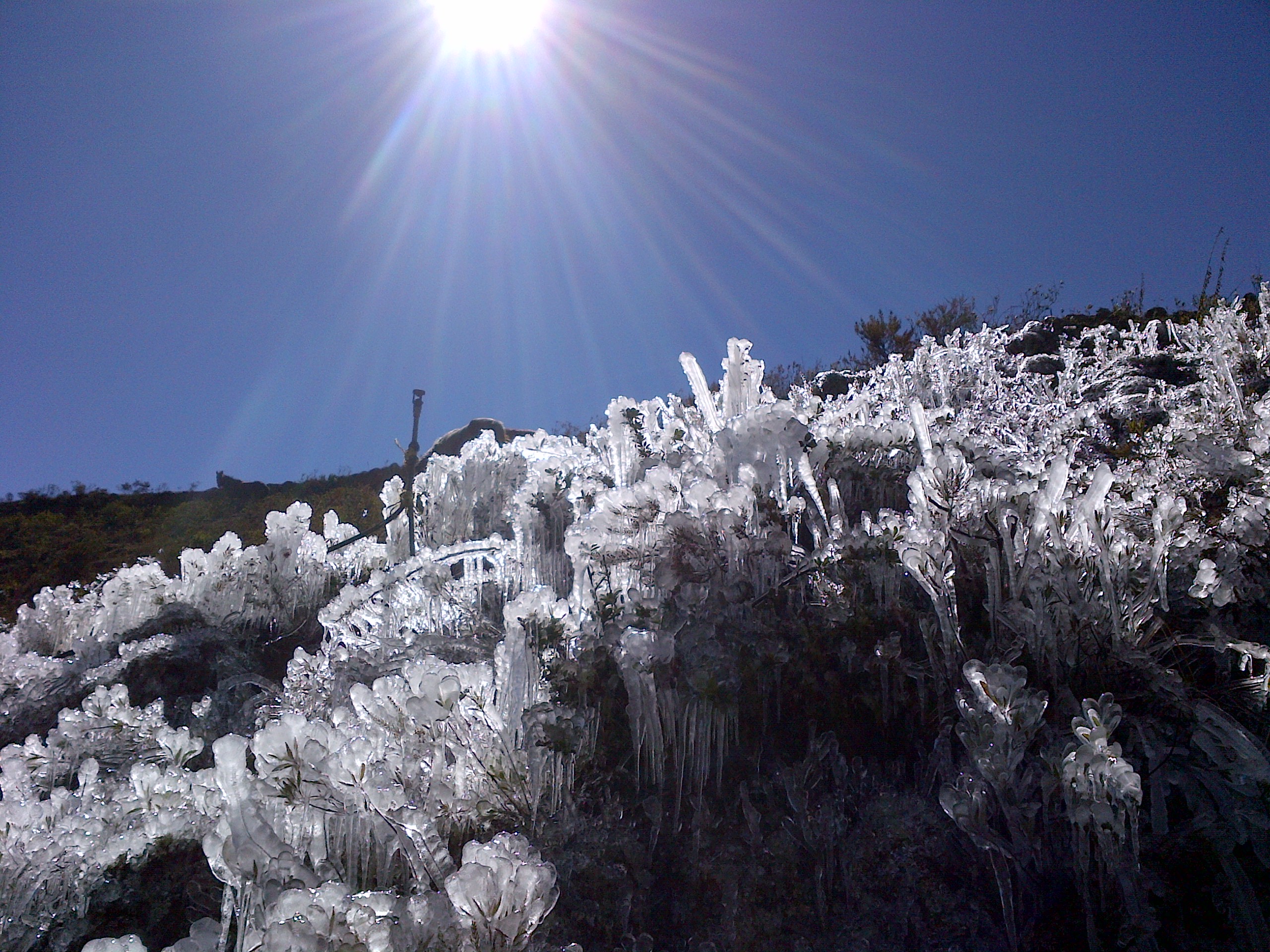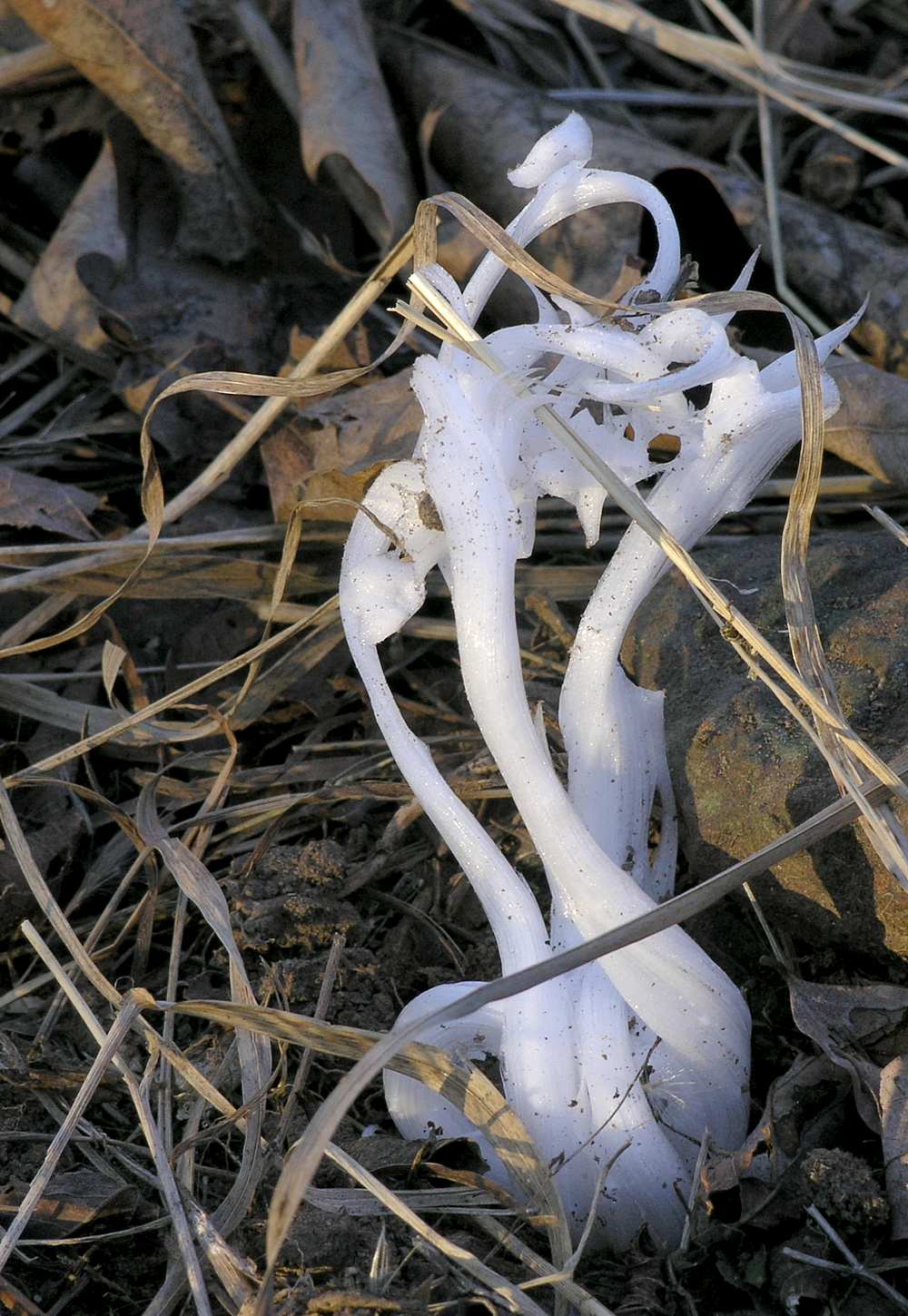|
Hair Ice
Hair ice, also known as ice wool or frost beard, is a type of ice that forms on dead wood and takes the shape of fine, silky hair. It is somewhat uncommon, and has been reported mostly at latitudes between 45 and 55 °N in broadleaf forests. The meteorologist (and discoverer of continental drift) Alfred Wegener described hair ice on wet dead wood in 1918,Alfred Wegener: ''Haareis auf morschem Holz.'' Die Naturwissenschaften 6/1, 1918. S. 598–601. assuming some specific fungi as the catalyst, a theory mostly confirmed by Gerhart Wagner and Christian Mätzler in 2005.Gerhart Wagner: Haareis – eine seltene winterliche Naturerscheinung. Was haben Pilze damit zu tun?' SZP/BSM 2005.Gerhart Wagner, Christian Mätzler: Haareis auf morschem Laubholz als biophysikalisches Phänomen.'' Forschungsbericht Nr. 2008-05-MW. Universität Bern. 2008.PDF-Download)Gerhart Wagner, Christian Mätzler: ''Haareis - Ein seltenes biophysikalisches Phänomen im Winter.'' Naturwissenschaftliche Rund ... [...More Info...] [...Related Items...] OR: [Wikipedia] [Google] [Baidu] |
Ice Crystal
Ice crystals are solid water (known as ice) in symmetrical shapes including hexagonal columns, hexagonal plates, and dendritic crystals. Ice crystals are responsible for various atmospheric optical displays and cloud formations. Formation At ambient temperature and pressure, water molecules have a V shape. The two hydrogen atoms bond to the oxygen atom at a 105° angle. Ice crystals have a hexagonal crystal lattice, meaning the water molecules arrange themselves into layered hexagons upon freezing. Slower crystal growth from colder and drier atmospheres produces more hexagonal symmetry. Depending on environmental temperature and humidity, ice crystals can develop from the initial hexagonal prism into many symmetric shapes. Possible shapes for ice crystals are columns, needles, plates and dendrites. Mixed patterns are also possible. The symmetric shapes are due to depositional growth, which is when ice forms directly from water vapor in the atmosphere. Small spaces ... [...More Info...] [...Related Items...] OR: [Wikipedia] [Google] [Baidu] |
Hydrology
Hydrology () is the scientific study of the movement, distribution, and management of water on Earth and other planets, including the water cycle, water resources, and drainage basin sustainability. A practitioner of hydrology is called a hydrologist. Hydrologists are scientists studying earth science, earth or environmental science, civil engineering, civil or environmental engineering, and physical geography. Using various analytical methods and scientific techniques, they collect and analyze data to help solve water related problems such as Environmentalism, environmental preservation, natural disasters, and Water resource management, water management. Hydrology subdivides into surface water hydrology, groundwater hydrology (hydrogeology), and marine hydrology. Domains of hydrology include hydrometeorology, surface-water hydrology, surface hydrology, hydrogeology, drainage basin, drainage-basin management, and water quality. Oceanography and meteorology are not included beca ... [...More Info...] [...Related Items...] OR: [Wikipedia] [Google] [Baidu] |
Frost And Rime
Frost is a thin layer of ice on a solid surface, which forms from water vapor that Deposition (phase transition), deposits onto a freezing surface. Frost forms when the air contains more water vapor than it can normally hold at a specific temperature. The process is similar to the formation of dew, except it occurs below the freezing point of water typically without crossing through a liquid state. Air always contains a certain amount of water vapor, depending on temperature. Warmer air can hold more than colder air. When the atmosphere contains more water than it can hold at a specific temperature, its relative humidity rises above 100% becoming supersaturated, and the excess water vapor is forced to deposit onto any nearby surface, forming seed crystals. The temperature at which frost will form is called the dew point, and depends on the humidity of the air. When the temperature of the air drops below its dew point, excess water vapor is forced out of solution, resulting in ... [...More Info...] [...Related Items...] OR: [Wikipedia] [Google] [Baidu] |
Needle Ice
Needle ice is a needle-shaped column of ice formed by groundwater. Needle ice forms when the temperature of the soil is above and the surface temperature of the air is below . Liquid water underground rises to the surface by capillary action, and then freezes and contributes to a growing needle-like ice column. The process usually occurs at night when the air temperature reaches its minimum. The ice needles are typically a few centimetres long. While growing, they may lift or push away small soil particles. On sloped surfaces, needle ice may be a factor contributing to soil creep.Isbell, D.: Needle Ice on Mt. Osceola'', EPOD of July 10, 2005. URL last accessed 2007-12-07.Pidwirny, M. URL last accessed 2007-12-07. Alternate names for needle ice are "frost pillars" ("Säuleneis" in German), "frost column", "Spew Ice", "Kammeis" (a German term meaning "comb ice"), "Stängeleis" (another German term referring to the stem-like structures), "shimobashira" (霜柱, a Japanese term m ... [...More Info...] [...Related Items...] OR: [Wikipedia] [Google] [Baidu] |
Hoarfrost
Frost is a thin layer of ice on a solid surface, which forms from water vapor that deposits onto a freezing surface. Frost forms when the air contains more water vapor than it can normally hold at a specific temperature. The process is similar to the formation of dew, except it occurs below the freezing point of water typically without crossing through a liquid state. Air always contains a certain amount of water vapor, depending on temperature. Warmer air can hold more than colder air. When the atmosphere contains more water than it can hold at a specific temperature, its relative humidity rises above 100% becoming supersaturated, and the excess water vapor is forced to deposit onto any nearby surface, forming seed crystals. The temperature at which frost will form is called the dew point, and depends on the humidity of the air. When the temperature of the air drops below its dew point, excess water vapor is forced out of solution, resulting in a phase change directly from wa ... [...More Info...] [...Related Items...] OR: [Wikipedia] [Google] [Baidu] |
Frost Flower
A frost flower or ice flower is formed when thin layers of ice are extruded from long-stemmed plants in autumn or early winter. The thin layers of ice are often formed into exquisite patterns, curling into "petals" which resemble flowers. Types Frost flower formations are also referred to as ''frost faces'', ''ice castles'', ''ice blossoms'', or ''crystallofolia''. Types of frost flowers include needle ice, frost pillars, or frost columns, extruded from pores in the soil, and ice ribbons, rabbit frost, or rabbit ice, extruded from linear fissures in plant stems. The term "ice flower" is also used as synonym for ice ribbons, but it may be used to describe the unrelated phenomenon of window frost as well. Formation The formation of frost flowers is dependent on a freezing weather condition occurring when the ground is not already frozen. The sap in the stem of the plants will expand (water expands when frozen), causing long, thin cracks to form along the length of the ste ... [...More Info...] [...Related Items...] OR: [Wikipedia] [Google] [Baidu] |
Antifreeze Protein
Antifreeze proteins (AFPs) or ice structuring proteins refer to a class of polypeptides produced by certain animals, plants, fungi and bacteria that permit their survival in temperatures below the freezing point of water. AFPs bind to small ice crystals to inhibit the growth and recrystallization of ice that would otherwise be fatal. There is also increasing evidence that AFPs interact with mammalian cell membranes to protect them from cold damage. This work suggests the involvement of AFPs in cold acclimatization. Non-colligative properties Unlike the widely used automotive antifreeze, ethylene glycol, AFPs do not lower freezing point in proportion to concentration. Rather, they work in a non colligative manner. This phenomenon allows them to act as an antifreeze at concentrations 1/300th to 1/500th of those of other dissolved solutes. Their low concentration minimizes their effect on osmotic pressure. The unusual properties of AFPs are attributed to their selective affini ... [...More Info...] [...Related Items...] OR: [Wikipedia] [Google] [Baidu] |
Fungicide
Fungicides are pesticides used to kill parasitic fungi or their spores. Fungi can cause serious damage in agriculture, resulting in losses of yield and quality. Fungicides are used both in agriculture and to fight fungal infections in animals, including humans. Fungicides are also used to control oomycetes, which are not taxonomically/genetically fungi, although sharing similar methods of infecting plants. Fungicides can either be contact, translaminar or systemic. Contact fungicides are not taken up into the plant tissue and protect only the plant where the spray is deposited. Translaminar fungicides redistribute the fungicide from the upper, sprayed leaf surface to the lower, unsprayed surface. Systemic fungicides are taken up and redistributed through the xylem vessels. Few fungicides move to all parts of a plant. Some are locally systemic, and some move upward. Most fungicides that can be bought retail are sold in liquid form, the active ingredient being present at 0.08% i ... [...More Info...] [...Related Items...] OR: [Wikipedia] [Google] [Baidu] |
Recrystallization (chemistry)
Recrystallization is a broad class of List of purification methods in chemistry , chemical purification techniques characterized by the dissolution of an impure sample in a solvent or solvent mixture, followed by some change in conditions that encourages the formation of pure isolate as solid crystals. Recrystallization as a purification technique is driven by spontaneous process , spontaneous processes of molecular self-assembly , self-assembly that leverage the highly ordered (i.e. low-entropy) and periodic characteristics of a crystal's molecular structure to produce purification. Basic principles The driving force of this purification emerges from the difference in molecular interactions between the isolate and the impurities: if a molecule of the desired isolate interacts with any isolate crystal present, it is likely the molecule Deposition (chemistry) , deposits on the crystal's ordered surface and contributes to the crystal's growth; if a molecule of the impurity inter ... [...More Info...] [...Related Items...] OR: [Wikipedia] [Google] [Baidu] |
Medullary Ray (botany)
Medullary rays, also known as vascular rays or pith rays, are cellular structures found in some species of wood. They appear as radial planar structures, perpendicular to the growth rings, which are visible to the naked eye. In a transverse section they appear as radiating lines from the centre of the log. In an axial section they may appear as a variety of transverse markings, depending on how close the section is to the plane of the ray. In a tangential section they may be hard to see at all. They are formed by the activity of vascular cambium. During the process of the division of cambium, the cambium cuts out cells on both the outer and inner side. These cells are parenchymatous. Most of these cells transform into xylem and phloem. But certain cells don't transform into xylem and phloem and remain as such. These cells cut out by the cambium towards the periphery are phloem parenchyma while those towards the pith are xylem parenchyma. Both of these cells together work as secon ... [...More Info...] [...Related Items...] OR: [Wikipedia] [Google] [Baidu] |





